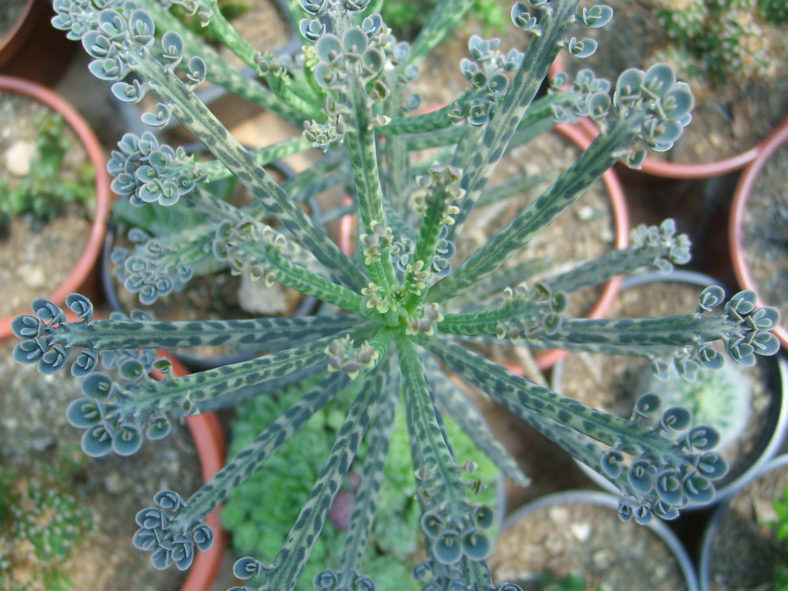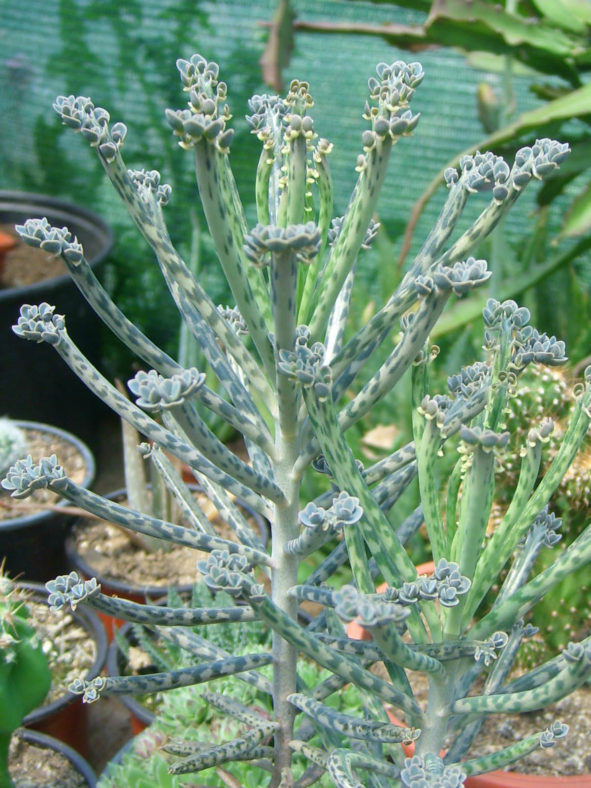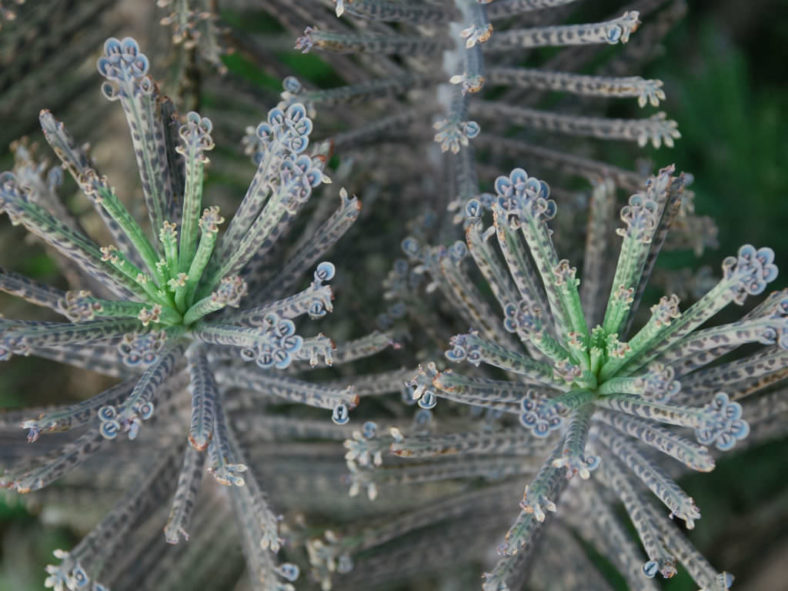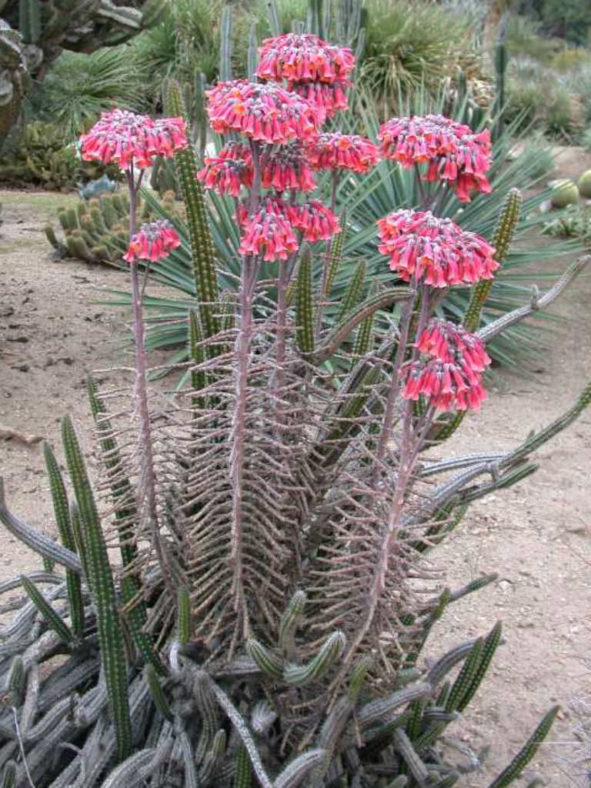Scientific Name
Kalanchoe delagoensis Eckl. & Zeyh.
Common Name(s)
Chandelier Plant, Lizard Plant, Mother of Millions, Mother of Thousands
Synonym(s)
Bryophyllum tubiflorum, Bryophyllum verticillatum, Bryophyllum delagoense, Geaya purpurea, Kalanchoe tubiflora, Kalanchoe verticillata
Scientific Classification
Family: Crassulaceae
Subfamily: Sedoideae
Tribe: Kalanchoeae
Genus: Kalanchoe
Etymology
The specific epithet "delagoensis (del-uh-go-EN-sis)" refers to Maputo Bay, formerly known as Delagoa Bay, an inlet of the Indian Ocean on the coast of Mozambique. It is a surprising name for a plant originating from Madagascar, located some 746 miles (1,200 km) from Maputo Bay.
Description
Kalanchoe delagoensis, also known as Kalanchoe tubiflora, is a succulent plant with erect, unbranched stems that bear sub-cylindrical, grey-green to reddish-green leaves often spotted with reddish-brown. The stem can grow up to 3.3 feet (1 m) tall, often with short sterile shoots at the base. The leaves are up to 6 inches (15 cm) long and 0.2 inches (0.6 cm) in diameter. The margins near the apex of the leaves have 3 to 9 conical teeth, between which the plantlets are produced.
The flowers are orange to scarlet, trumpet-shaped, and up to 1.2 inches (3 cm) long. They dangle in clusters at the top of the stem.

Hardiness
USDA hardiness zones 10a to 11b: from 30 °F (−1.1 °C) to 50 °F (+10 °C).
How to Grow and Care
It is easy to grow the Chandelier Plant. You have to learn to control its spread as a part of caring. Growing this plant can be worth all this trouble when you know how to keep it under control, especially when the orange blooms appear.
For those with more hospitable conditions, learning to grow Kalanchoe and keep it within bounds may include growing it in a large container or even as a houseplant. At the same time, drought and heat-resistant, the plant is also adaptable to most growing conditions and will often recover from a mild winter freeze.
Chandelier Plant care often includes removing small plants that have jumped from the container into the ground or another pot. This happens because the Chandelier Plant forms small plantlets at the ends of the leaves. When these are dislodged, they immediately take root and begin growing in any available soil. Therefore, removing them from unwanted areas is integral to caring for Chandelier Plants.
Learn more at How to Grow and Care for Kalanchoe.
Origin
Kalanchoe delagoensis is native to Madagascar.
Forms, Cultivars, and Hybrids
- Kalanchoe delagoensis 'Monstruosa'
- Kalanchoe × houghtonii
- Kalanchoe ×richaudii
- Kalanchoe 'Pink Butterflies'
Links
- Back to genus Kalanchoe
- Succupedia: Browse succulents by Scientific Name, Common Name, Genus, Family, USDA Hardiness Zone, Origin, or cacti by Genus
Photo Gallery
Click on a photo to see a larger version.



